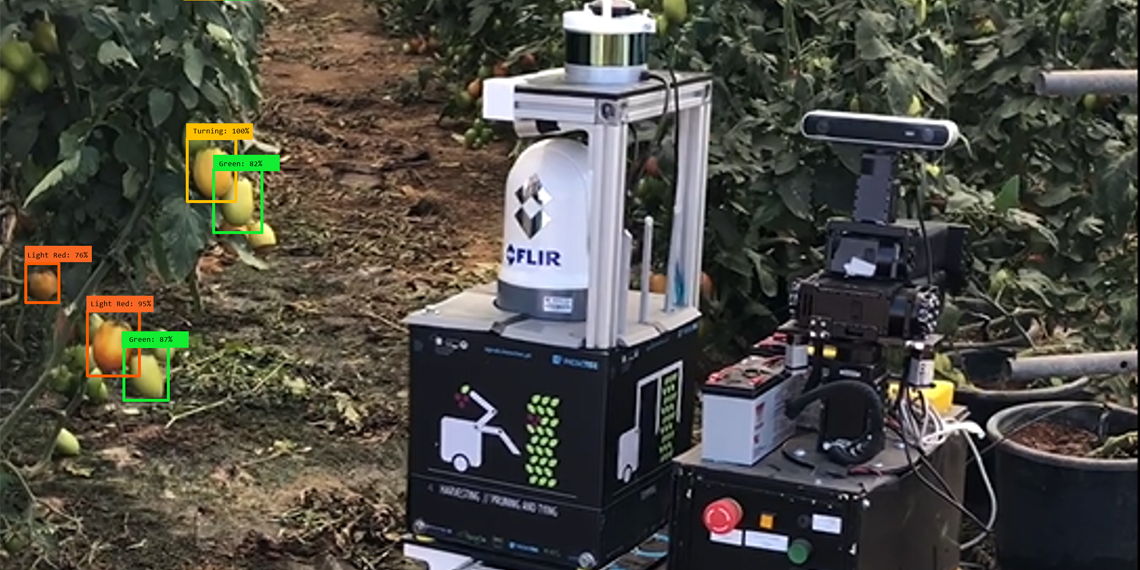A solution developed by INESC TEC researchers, focusing on deep learning models to automate the process of greenhouse tomato harvesting received the “Agronomy Best Paper Award” – granted by the scientific journal Agronomy, of the Swiss Multidisciplinary Digital Publishing Institute (MPDI). The paper “Benchmark of Deep Learning and a Proposed HSV Colour Space Models for the Detection and Classification of Greenhouse Tomato”, by INESC TEC researchers Germano Moreira, Mário Cunha, Filipe Neves dos Santos, Tatiana Pinho and Sandro Magalhães, will be crucial to support farmers in decision-making processes.
Growing and harvesting tomatoes may seem like simple tasks in the procedures of the food industry; but the truth is that, as the second most harvested vegetable in the world, there are certain social problems.
“A large fraction of the labour costs of greenhouse production relates to harvesting operations, often associated with social discrimination and illegal workflows”, explained INESC TEC researcher Germano Moreira.
Supported by INESC TEC researchers Mário Cunha and Filipe Neves dos Santos, and with contributions from Sandro Magalhães and Tatiana Pinho, Germano developed an innovative study that analyses said tasks’ potential for automation. How? By proposing deep machine and deep learning models that allow the accurate detection of greenhouse tomatoes according to their growth.
The advantage, said the researcher, is that “robotic systems can operate in dangerous and challenging agricultural environments, performing tasks that are often hard and physically demanding”. Germano Moreira also explained that “the development of an accurate detection system is a crucial step towards achieving a fully automated robotic harvesting”.
The results, published in the paper “Benchmark of Deep Learning and a Proposed HSV Colour Space Models for the Detection and Classification of Greenhouse Tomato”, highlight the potential of computer vision combined with AI and robotics to help farmers make more informed decisions to increase productivity and reduce resources use.
Moreover, this is not the first time that this work has been acknowledged: the same paper had already been mentioned by the Web-of-Science bibliometric base, Clarivate, as “Highly Cited Paper” – which highlights papers with the best performances based on the number of citations.
The researchers mentioned in this news piece are associated with INESC TEC and UP-FCUP.



 News, current topics, curiosities and so much more about INESC TEC and its community!
News, current topics, curiosities and so much more about INESC TEC and its community!